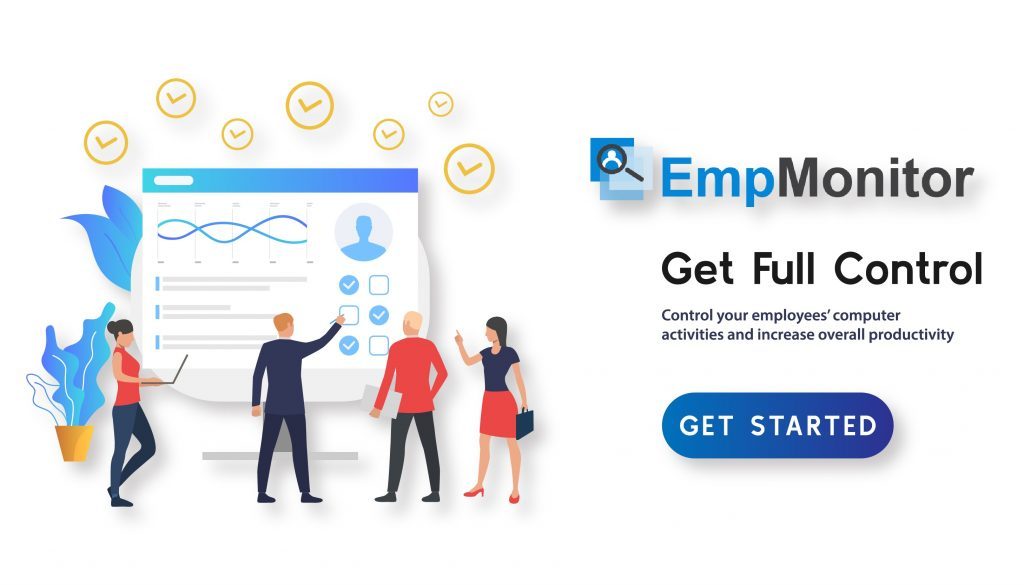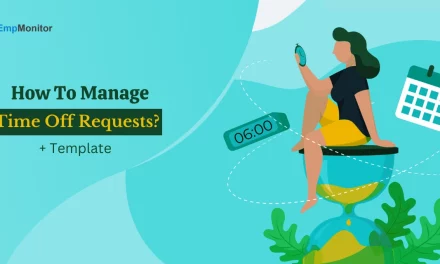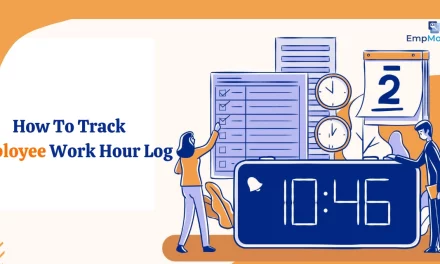Explore the essence of maintaining a balance between work and leisure through managing time off requests. In the hustle of our daily routines, knowing how to navigate these requests is pivotal for a harmonious work-life equilibrium.
This blog is your compass, whether you’re a seasoned professional or just starting, guiding you through the process of requesting time off with finesse. Discover the secrets to effective breaks, ensuring that each pause becomes a catalyst for personal well-being and professional accomplishment.
Time off requests are a familiar aspect of work life, and at times, they come up unexpectedly. Whether due to personal emergencies or unforeseen opportunities, knowing how to address these requests is vital. This blog equips you with not only quick fixes but also the insights to handle these situations like a seasoned professional.
Discover the delicate balance between addressing immediate needs and maintaining workflow, ensuring the unprepared breaks don’t disrupt your overall work effectiveness.
Join us as we delve into the realm of managing last-minute employee time off requests and uncover strategies to handle them like a pro, transforming unforeseen challenges into opportunities for efficient time management.
LISTEN TO THE PODCAST NOW!
The Importance Of Providing Time Off
Deciding whether to provide time off for your employees is crucial. Offering this benefit is a great idea because it has positive effects on your employees and your business. Time away from work, whether it’s paid or unpaid, is important for several reasons.
Firstly, it boosts the morale of your employees. When they have the opportunity to take a break, it helps them feel happier and more satisfied with their jobs. This, in turn, contributes to a better work environment. Additionally, it plays a significant role in maintaining a healthy work-life balance. If employees can take some time off, they are less likely to experience burnout, which can lead to a drop in productivity.
Providing time off is a valuable benefit that makes your business more appealing to potential candidates. Job seekers often consider the perks and benefits offered by a company when deciding where to work. By offering time away from work, you make your business stand out and attract top talent.
There are two types of time off—paid time off (PTO) and unpaid time off (UTO). PTO policy is seen as a better benefit compared to UTO because employees get paid while taking time off.
PTO is a comprehensive leave category that includes various types of paid leave, such as vacation, sick leave, and personal days. Efficient employee vacation tracking is crucial in managing PTO. And employee tracking software like EmpMonitor, it becomes easier to ensure accurate work records of employees and streamline their leave management requests.
It’s important to communicate clearly with your employees about how much total time off they can take, whether paid or unpaid.
To prevent any misunderstandings, it’s crucial to ensure clarity and transparency, nurturing a mutually beneficial dynamic that supports both your employees and the smooth running of your business.
How To Deal With A Last-Minute Time Off Requests
Managing unexpected time off requests can be a challenging task for employers, often presenting a dilemma between covering unforeseen workload gaps and maintaining positive employee relations. Here are five essential steps to navigate these situations effectively:
Legal Considerations:
- Begin by assessing your legal obligations. Some states mandate short-notice time off for specific reasons, such as bereavement leave. Familiarize yourself with applicable laws and ensure compliance to avoid legal repercussions.
Workload Assessment:
- Evaluate your current staffing levels and workload. If other team members can cover the additional tasks without compromising deadlines, approving the request might be feasible. Conversely, if the absence of a key employee would significantly impact operations, a thoughtful reconsideration may be necessary.
Additional Circumstances:
- When legal obligations don’t dictate your decision, consider factors like the timing and duration of the request. A single-day absence may be more manageable than a week-long absence, and recent time-off patterns of the requesting employee can provide context.
Employee Reaction:
- Anticipate how the employee might react to a denial. Assess their value to the organization, potential burnout risks, and the feasibility of finding temporary solutions. Communicate your decision clearly and offer to discuss the matter further to mitigate any emotional impact.
Establish a Clear Process:
- Implementing a standardized process for handling time off requests ensures consistency and minimizes perceived bias. Define criteria for approval or denial, establish response timelines, and determine the communication method for conveying decisions.
Remember, maintaining open communication and exploring alternative solutions, such as task delegation or temporary hires, can help alleviate the challenges posed by last-minute requests.
Creating A Time Off Policy To Prevent Last-Minute Requests
Preventing last-minute UTO (Unscheduled Time Off) and PTO (Paid Time Off) policies is more better than managing them when they arise. This begins with the establishment of a clear policy outlining the when and how of employees requesting time off.
Incorporate your time off policy into the employee handbook and ensure its clarity. Consider the following key points:
Required Notice:
Implement a policy mandating advance notice for time-off requests to deter last-minute submissions. Specify the notice duration based on your business’s scheduling practices, such as two weeks for many companies.
Allow exceptions for unforeseen circumstances, such as family emergencies, with clear language stating that these requests will be considered at the manager’s discretion. It ensures a balance between structured policies and flexibility for unexpected events.
Submission of requests:
Guidance on the submission of time off requests is a crucial aspect of your time off policy. The policy should clearly outline the process for employees to request time off. For instance, a section titled “How to submit your request” provides details on whether requests should be in written form or initiated through an online approval system.
It’s essential to document all requests and decisions. While Excel may suffice for small businesses, it becomes cumbersome as your team grows. Opting for dedicated time off management software proves beneficial for businesses of any size. Avoid relying on verbal agreements, as these are prone to being forgotten and may lead to disputes later on.
Blackout periods:
Introduce blackout periods to restrict employees from taking time off during specific busy periods, allowing exceptions only for emergencies. For instance, during the crucial weeks leading up to Christmas, implement a comprehensive policy stating that time off requests won’t be approved during this period.
This policy communicates to employees that they need to plan their vacations or other absences for alternative times throughout the year. It’s important to note that blackout periods should be brief and infrequent, ensuring employees have ample opportunities to utilize their time off without significant restrictions.
Third-Party Tool:
Consider incorporating a third-party tool like EmpMonitor to streamline and enhance the efficiency of your time management. Dedicated software ensures accurate documentation and avoids the pitfalls of relying on manual or verbal agreements.
EmpMonitor: workforce management software
EmpMonitor is a versatile workforce management software designed to streamline and enhance various aspects of employee management for businesses.
When it comes to managing time off requests seamlessly, the EmpMonitor time tracking feature could be a great help.
Its functionality offers an efficient approach to tracking employee work time and time off requests, leading to a more structured and transparent workplace environment.
User-Friendly Interface:
EmpMonitor’s intuitive interface simplifies the process of submitting time off requests for employees. With easy access to the platform, employees are more likely to submit their requests promptly and accurately, thereby reducing administrative burden and ensuring efficient time management.
Centralized Record Keeping:
EmpMonitor systematically documents all time off requests and decisions. This reduces the likelihood of miscommunication or disputes, enhancing accountability and transparency in managing time off.
Integration with Attendance Tracking:
The integration of time off requests with attendance tracking streamlines overall workforce management. This synergy provides a comprehensive view of employee availability and attendance patterns.
Data Accessibility:
While EmpMonitor focuses on tracking employee work hours, its data can be accessed to verify employees’ availability before approving time off requests. Managers can refer to the system to ensure adequate coverage when granting leave.
Resource Allocation:
EmpMonitor provides insights into employee work patterns, enabling managers to identify periods of low workload or high coverage. This information helps in approving time off requests without disrupting workflow or productivity.
Real-time Insights:
Gain real-time insights into time off patterns and trends within your organization. EmpMonitor’s reporting capabilities enable data-driven decision-making regarding workforce management and planning.
EmpMonitor’s feature is a valuable addition to your toolkit, fostering efficiency and transparency in managing employee absences. Whether preventing last-minute requests or handling overlapping requests, this tool empowers businesses to strike a balance between operational needs and employee well-being.
Overlapping requests:
Managing overlapping time off requests, especially during peak vacation periods like summer, requires a well-defined policy to ensure a fair and efficient process. If your business struggles to cover work when multiple employees request the same days off, establishing guidelines for approval becomes crucial.
One straightforward approach is the first-come, first-served method. In this system, the initial request for time off gets approval, potentially disadvantageous to those who are less proactive in planning their breaks. While encouraging early requests, it may pose challenges for employees who might not plan as far in advance.
Alternatively, you can evaluate requests by considering the recent time off each employee has taken. Giving preference to those who haven’t had time off in a while can balance the approval process but requires more discretion.
Another option involves approving time off based on the reason behind the request. While clear-cut cases like attending a child’s graduation may be straightforward, deciding between employees seeking personal days can be trickier. In such cases, finding compromises may be necessary to ensure fairness and employee satisfaction. Managing overlapping time-off requests requires a thoughtful approach, balancing the needs of the business with the well-being of your team. Additionally, tracking the time off request can help in prioritizing and resolving conflicts effectively.
READ MORE
How To Manage Time Off Requests For Payday + Template Format
Time Off Request- Meaning, What To Include In Policy, & More!
Pto Policy- Boosting Productivity And Prosperity
Strategies To Reduce the Impact of Time Off Requests
Implementing effective strategies to mitigate the impact of time off is crucial in maintaining normal business operations and fostering a culture that supports employees’ well-deserved breaks. In addition to establishing a comprehensive time-off policy, consider the following approaches:
Cross-Train Staff:
Ensure that multiple employees are proficient in essential roles through cross-training. For instance, if your sole payroll specialist plans to take time off, having another team member capable of running payroll prevents disruptions like missed paychecks.
Build Extra Capacity:
Avoid running your business at maximum capacity consistently, as this may discourage employees from taking time off, potentially leading to burnout. Consider expanding your team or finding ways to enhance productivity, such as automating repetitive tasks that consume valuable time.
By incorporating these strategies, you not only ensure smooth business continuity during employee absences but also create an environment that encourages and supports well-managed breaks for your workforce.
Wrapping Up
Handling last-minute time off requests poses challenges for businesses, yet finding a balance between employee satisfaction and operational needs is essential. Evaluate each request by considering your team, workload, and circumstances, making informed decisions on approvals or denials.
To mitigate spontaneous requests, establish a transparent time off policy specifying the required advance notice. Additionally, cross-train your team or hire extra staff to minimize disruptions caused by unplanned absences.
Streamline the implementation of your policy and address last-minute requests effortlessly by utilizing time tracking software like EmpMonitor also for employee time off tracking. Such solutions are invaluable in maintaining order and ensuring your business remains adaptable to unforeseen circumstances.











